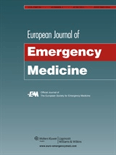
European Journal of Emergency Medicine
Scope & Guideline
Exploring Innovations for Critical Care
Introduction
Aims and Scopes
- Acute Care Management:
Focuses on the diagnosis, treatment, and management of acute medical conditions in emergency settings, emphasizing timely interventions and patient safety. - Clinical Research and Trials:
Publishes findings from clinical trials and observational studies that evaluate new treatments, diagnostic tools, and protocols in emergency medicine. - Quality Improvement and Safety:
Addresses methodologies and strategies for enhancing the quality of care in emergency departments, including patient safety initiatives and training programs. - Multidisciplinary Collaboration:
Encourages research that involves collaboration across various healthcare disciplines to improve emergency care delivery and patient outcomes. - Innovative Technologies in Emergency Medicine:
Explores the integration of technology, such as artificial intelligence and telemedicine, in emergency care to enhance decision-making and operational efficiency. - Patient-Centered Care:
Focuses on understanding patient needs and preferences in emergency settings, including the impact of social factors on health outcomes. - Emergency Preparedness and Response:
Examines the role of emergency medicine in disaster response, public health emergencies, and the management of mass casualty incidents.
Trending and Emerging
- Artificial Intelligence and Machine Learning:
There is a growing interest in the application of AI and machine learning technologies to improve diagnostic accuracy, patient triage, and operational efficiency in emergency departments. - Telemedicine and Remote Care:
The rise of telemedicine, especially post-COVID-19, has prompted an increase in research on its implementation and effectiveness in emergency care, addressing access and continuity of care. - Mental Health in Emergency Settings:
Research focusing on mental health issues, including the management of psychiatric emergencies and the psychological impact of emergency care on patients and providers, is becoming increasingly relevant. - Geriatric Emergency Medicine:
With an aging population, there is an emerging focus on the unique needs and treatment protocols for elderly patients in emergency settings, highlighting the importance of specialized care. - Public Health and Emergency Preparedness:
Research on the role of emergency medicine in public health emergencies, including pandemics and natural disasters, is gaining traction as the field emphasizes preparedness and response strategies. - Patient Experience and Engagement:
There is an increasing emphasis on understanding patient perspectives and experiences in emergency care, leading to research aimed at improving patient satisfaction and outcomes.
Declining or Waning
- Traditional Diagnostic Methods:
There has been a noticeable decrease in studies focusing on conventional diagnostic methods in emergency medicine, as the field shifts towards more innovative and technology-driven approaches. - Basic Life Support Protocols:
Research on standard basic life support protocols has become less prominent, possibly due to the establishment of standardized guidelines and the emphasis on advanced life support techniques. - General Emergency Medicine Training:
The focus on general training programs for emergency medicine has declined, with an increasing emphasis on specialized training and competencies tailored to specific areas of emergency care. - Single-Center Studies:
The prevalence of single-center studies appears to be decreasing as the journal increasingly favors multicenter and international collaborative research to enhance generalizability and applicability of findings. - Basic Pharmacological Interventions:
Research pertaining to basic pharmacological interventions in emergency settings has seen reduced publication frequency, likely overshadowed by studies exploring novel therapeutic approaches.
Similar Journals
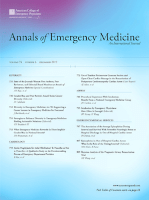
ANNALS OF EMERGENCY MEDICINE
Your Gateway to Essential Emergency Medicine DiscoveriesANNALS OF EMERGENCY MEDICINE is a leading peer-reviewed journal dedicated to the advancement of emergency medicine, published by MOSBY-ELSEVIER. With an impressive impact factor and a prestigious ranking of Q1 in the field, this journal serves as an essential platform for disseminating innovative research findings, clinical practices, and policy developments within emergency medicine. Recognized for its high-quality contributions, it ranks #6 out of 109 in Scopus's Emergency Medicine category, placing it in the top 6% of journals in the field. Since its inception in 1980, ANNALS OF EMERGENCY MEDICINE has consistently provided valuable insights to researchers, practitioners, and students, fostering a deeper understanding of emergency care challenges and solutions. While the journal is not open access, it remains a cornerstone for those seeking to stay at the forefront of emergency medicine advancements, providing access to critical research within the field.

Journal of the American College of Emergency Physicians Open
Pioneering Innovations in Emergency Medicine ResearchJournal of the American College of Emergency Physicians Open is a prominent Open Access journal published by WILEY that has been committed to advancing the field of emergency medicine since its inception in 2020. As a vital resource for researchers, clinicians, and students, this journal aims to disseminate innovative research findings, clinical guidelines, and educational resources that support the rapidly evolving landscape of emergency care. With a solid Q1 ranking in the emergency medicine category and positioned within the top 25 ranks of Scopus’ emergency medicine listings, the journal ensures high visibility and accessibility for critical research. As an open-access publication, it provides unrestricted access to its content, facilitating knowledge sharing and collaboration among professionals globally. The journal's significant impact on the field is reflected in its growing influence, underlining its relevance as an essential platform for advancing emergency medicine practice and research.

Canadian Journal of Emergency Medicine
Exploring the Frontiers of Emergency Medical ScienceWelcome to the Canadian Journal of Emergency Medicine, an esteemed publication in the field of Emergency Medicine published by SPRINGER HEIDELBERG. With its ISSN 1481-8035 and E-ISSN 1481-8043, this journal serves as a vital resource for cutting-edge research and reviews from 1999 to 2024, maintaining a prominent position in the academic landscape as evidenced by its Q2 ranking in the Emergency Medicine category and a commendable Scopus ranking of #35 out of 109 journals. The journal is committed to advancing medical practices and improving patient outcomes through rigorous- peer-reviewed articles that address contemporary challenges and innovations in emergency care. Though it is not an open-access publication, it remains an essential platform for sharing knowledge among health professionals, researchers, and students dedicated to optimizing emergency medical services and enhancing overall healthcare delivery.
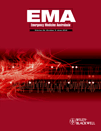
Emergency Medicine Australasia
Enhancing Patient Outcomes Through Collaborative ResearchEmergency Medicine Australasia, published by WILEY, stands as a premier journal in the field of emergency medicine, underlining its significance through its distinguished ranking as Q1 in Emergency Medicine and Q2 in Medicine (miscellaneous) as of 2023. The journal, which has been in circulation since 2004, provides a platform for high-quality research, clinical studies, and reviews that contribute to the advancements in emergency medicine practices. With a Scopus rank of 28 out of 109 in its category, it occupies a notable position within the medical community, boasting a 74th percentile ranking that reflects its impactful contributions to the field. Although it operates primarily on a subscription basis, Emergency Medicine Australasia is essential reading for researchers, practitioners, and students seeking to stay updated on the latest developments and methodologies in emergency care. This journal not only aims to disseminate critical knowledge but also fosters a collaborative environment for sharing innovations that improve patient outcomes and emergency services.
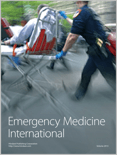
Emergency Medicine International
Innovating emergency medicine for a healthier tomorrow.Emergency Medicine International is a distinguished journal dedicated to the dynamic field of emergency medicine, published by HINDAWI LTD. As an Open Access journal since 2010, it ensures widespread dissemination of high-quality research, providing vital insights and advancements in emergency care and crisis intervention methodologies. With an ISSN of 2090-2840 and an E-ISSN of 2090-2859, the journal is indexed in Scopus, where it holds a commendable rank of #104 of 109 in the emergency medicine category, placing it in the 5th percentile. Spanning crucial years from 2014 to 2017 and 2022 to 2024, Emergency Medicine International has established a reputation for publishing significant findings that aid practitioners and researchers in improving emergency healthcare outcomes. Operating from its headquarters in Egypt, the journal serves as an essential resource for professionals and students alike, fostering the development of evidence-based practice in a critical area of healthcare.

Emergency Radiology
Pioneering Research in Critical Imaging SolutionsEmergency Radiology, published by SPRINGER HEIDELBERG, is a leading journal in the fields of emergency medicine and radiology, dedicated to advancing the understanding and application of diagnostic imaging in urgent medical conditions. Established in 1994, this journal has consistently contributed to the discourse around emergency diagnostics, maintaining a strong position within the academic community, as evidenced by its Q2 rankings in both Emergency Medicine and Radiology, Nuclear Medicine and Imaging categories as of 2023. With a distinguished focus on innovative research and case studies, it serves a diverse audience of researchers, clinicians, and healthcare professionals who seek to enhance their knowledge and improve patient outcomes in emergency settings. While the journal is not currently open access, it offers robust subscription options and continues to be an integral resource for those at the forefront of emergency care. With an ISSN of 1070-3004 and an E-ISSN of 1438-1435, Emergency Radiology is positioned to remain a key player in shaping the future of medical imaging through its commitment to high-quality research and evidence-based practices.

Open Access Emergency Medicine
Advancing emergency care through open access research.Open Access Emergency Medicine, published by DOVE MEDICAL PRESS LTD, is a premier journal dedicated to the dynamic fields of Emergency Medicine and Emergency Nursing. With its ISSN 1179-1500, this journal has established a notable presence since its inception as an Open Access platform in 2010, offering unrestricted access to high-quality research and innovative practices in the area. As one of the leading journals in its field, it holds a respectable Q2 ranking in both Emergency Medicine and Emergency Nursing categories as of 2023, reflecting its commitment to advancing knowledge and fostering impactful research. The journal is indexed in prestigious databases with solid Scopus rankings, placing it in the 65th percentile for Emergency Medicine and the 64th percentile for Emergency Nursing, ensuring that contributions reach a diverse audience of researchers, practitioners, and students worldwide. With its focus on contemporary issues, this journal serves as an essential resource for the continual growth and development of emergency health services.
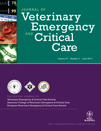
JOURNAL OF VETERINARY EMERGENCY AND CRITICAL CARE
Pioneering research for urgent animal health needs.JOURNAL OF VETERINARY EMERGENCY AND CRITICAL CARE, published by WILEY, is a leading journal in the field of veterinary science, specifically focusing on emergency medicine and critical care for animals. With an impact factor that underscores its significance in the field, this journal serves as a crucial resource for veterinary professionals, researchers, and students dedicated to advancing the care of animals in critical conditions. Since its inception in 1991, the journal has continually contributed to the knowledge base and methodological advancements in veterinary emergency practices, consistently ranking in the Q1 category for veterinary sciences, as per the latest Scopus Ranks. Located in the United Kingdom, the journal is committed to disseminating high-quality, peer-reviewed research that addresses the challenges and innovations in veterinary critical care. With its goal to enhance clinical outcomes through evidence-based practices, the JOURNAL OF VETERINARY EMERGENCY AND CRITICAL CARE remains an essential platform for scholarly communication and collaboration in veterinary medicine.

Annales Francaises de Medecine d Urgence
Enriching the Future of Urgent CareAnnales Françaises de Médecine d'Urgence is a prominent journal dedicated to the field of Emergency Medicine, published by LAVOISIER. With an ISSN of 2108-6524 and E-ISSN of 2108-6591, this journal aims to disseminate vital research and innovative practices pertinent to emergency care, addressing the dynamic challenges faced by healthcare professionals in acute medical settings. While it operates under a non-open access model, it maintains an important role in advancing knowledge in the discipline, evidenced by its categorization in 2023 as Q4 in Emergency Medicine with a Scopus ranking of #85 out of 109, placing it in the 22nd percentile. Spanning years from 2011 to 2024, this journal serves as a platform for researchers, practitioners, and students committed to improving patient outcomes and advancing the science of emergency medicine. With its thoughtfully curated articles and studies, Annales Françaises de Médecine d'Urgence is a crucial resource for anyone who aims to stay at the forefront of developments in emergency medical care.
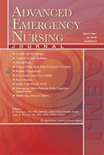
Advanced Emergency Nursing Journal
Elevating Standards in Emergency Nursing PracticeAdvanced Emergency Nursing Journal, published by Lippincott Williams & Wilkins, stands as a key resource within the domains of Emergency Medicine and Emergency Nursing. With a commitment to advancing the field, this journal provides a platform for rigorous research, critical reviews, and innovative practices aimed at enhancing patient care in emergency settings. Though it holds a Q3 ranking in both related categories as per the 2023 metrics, its global reach spans various aspects of emergency care, promising insights that are crucial for both professionals and academics alike. Covering topics from clinical procedures to policy analysis, the journal invites submissions that aim to bridge theory and practice, highlighting the importance of evidence-based approaches in emergency nursing. Researchers, educators, and healthcare practitioners can Find more information and explore their own contributions in a dynamic environment that continuously evolves with the field. Whether you're seeking to stay current with the latest advancements or to publish your findings, this journal is an essential asset for those dedicated to improving care in urgent medical situations.